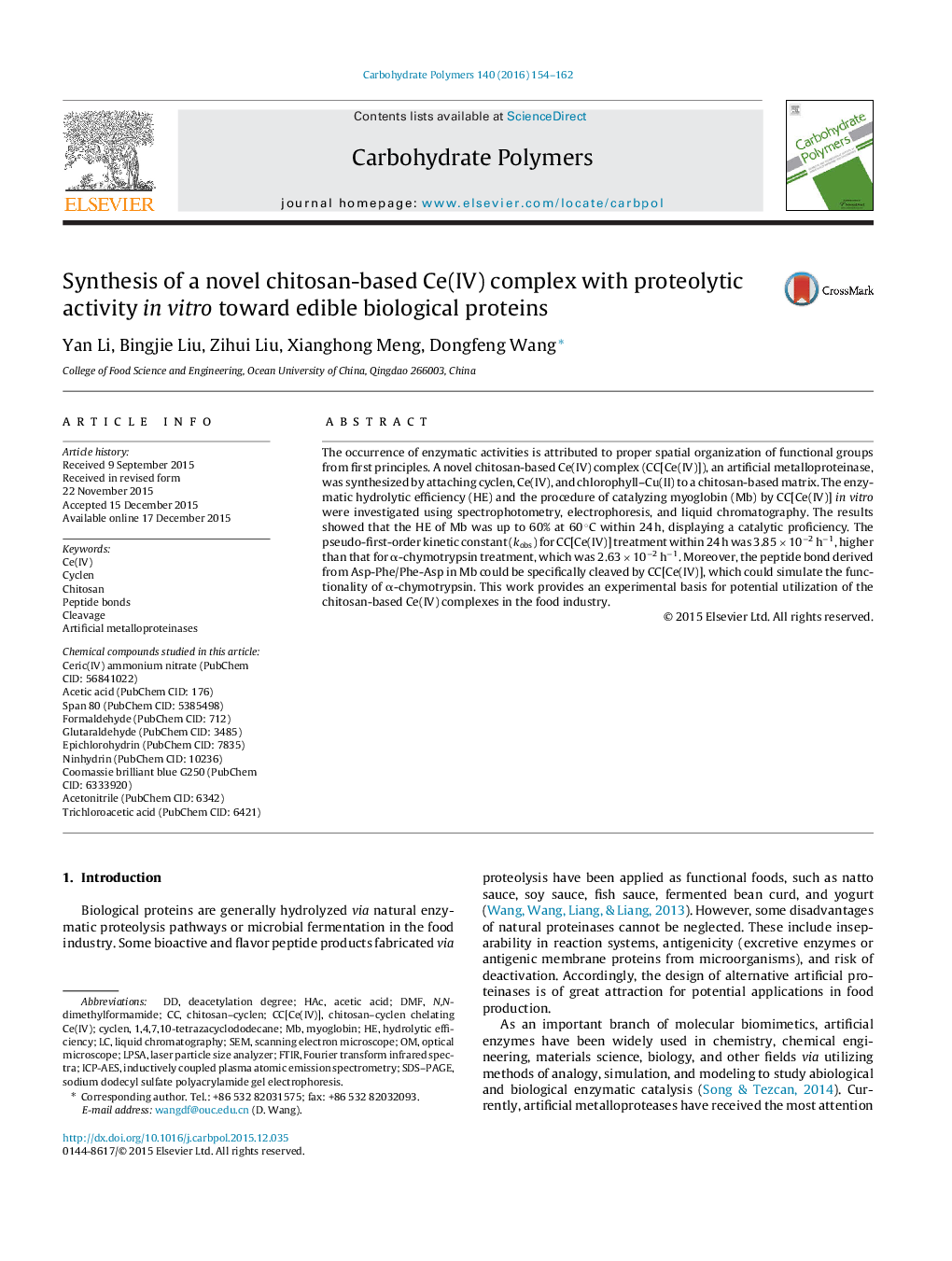| Article ID | Journal | Published Year | Pages | File Type |
|---|---|---|---|---|
| 1383447 | Carbohydrate Polymers | 2016 | 9 Pages |
•Chitosan–cyclenCe(IV) complexes were synthesized as artificial metalloproteinase.•The high hydrolytic efficiency toward myoglobinand ovalbumin was investigated.•The cleavage sites for hydrolyzing Mb were embodied inAsp, Pheand Tyr.•Excision enzyme activity of complexes for proteolysis was confirmed.•High metal stabilityof complexesensuredsafe application in food production.
The occurrence of enzymatic activities is attributed to proper spatial organization of functional groups from first principles. A novel chitosan-based Ce(IV) complex (CC[Ce(IV)]), an artificial metalloproteinase, was synthesized by attaching cyclen, Ce(IV), and chlorophyll–Cu(II) to a chitosan-based matrix. The enzymatic hydrolytic efficiency (HE) and the procedure of catalyzing myoglobin (Mb) by CC[Ce(IV)] in vitro were investigated using spectrophotometry, electrophoresis, and liquid chromatography. The results showed that the HE of Mb was up to 60% at 60 °C within 24 h, displaying a catalytic proficiency. The pseudo-first-order kinetic constant (kobs) for CC[Ce(IV)] treatment within 24 h was 3.85 × 10−2 h−1, higher than that for α-chymotrypsin treatment, which was 2.63 × 10−2 h−1. Moreover, the peptide bond derived from Asp-Phe/Phe-Asp in Mb could be specifically cleaved by CC[Ce(IV)], which could simulate the functionality of α-chymotrypsin. This work provides an experimental basis for potential utilization of the chitosan-based Ce(IV) complexes in the food industry.
